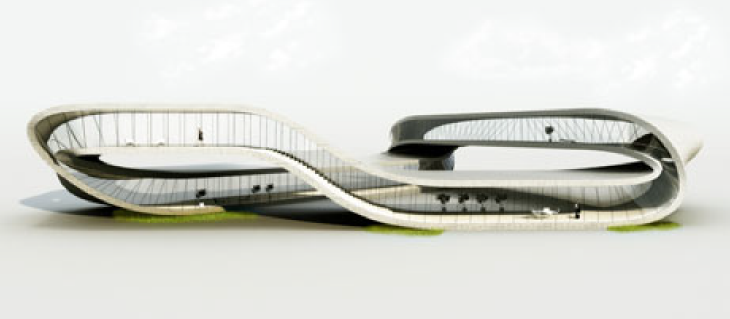Homes, 3D Printed

The concept of 3D printing a livable structure has been around for a few years now with more than one organization pursuing the idea, we may soon see the first 3D printed home.
There are three leaders striving to build the first home using 3D printing technology; each using different designs and different materials to accomplish the same goal.
University Architecture has designed a building shaped like a mobius strip. This is a triangular shaped building where at each corner there is an underpass creating a geometric shape with no beginning or end – envision the cursive-like Adobe logo in 3D. The company is using concrete as the material to 3D print framed sections. These sections will then be filled with concrete and fiberglass.
Universe Architecture plans to extrude the concrete in layers in a process called additive manufacturing. The layers slowly build up to complete the object.
Softkill Design is taking a different approach to 3D printing a house. Their design is inspired by the porous structure of bones and is named Protohouse. Softkill Design has chosen to use laser sintered bio-plastic to build Protohouse, which resembles a nest and looks more organic than the typical home. The process of laser sintering starts with a bed of powdered material, in this case plastic. A laser precisely melts and fuses the material before another layer is added. The process is repeated-building the object in thin layers.
Lastly, the Dutch design firm, DUS Public Architecture, hopes to build a home from recycled bottles. The firm will use fused deposition 3D printing. This is the same technology used by MakerBot, Cube, and other consumer 3D printers. The plastic is melted to a liquid and then laid down layer by layer to form the object. DUS Public Architecture plans to develop a fused deposition 3D printer large enough to print a room. The large 3D printer is known as the KamerMaker.
These three innovative companies are taking very different approaches to 3D printing a home. It’s hard to say who will reach the goal first but with the rapid progression of 3D printing technology we’re not far off from the first 3D-printed livable structure.
Another organization pursuing new construction technologies is the University of Southern California. While they don’t have plans to build an entire house yet, this group of innovators is developing layered fabrication technology, known as Contour Crafting, and robotic construction systems. USC has successfully built walls by extruding cement from a large nozzle.
This research could potentially change the way we build homes on earth and on other planets.
To learn more about the latest in 3D Printing, check out our 3D printing.